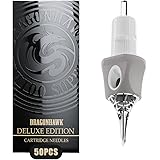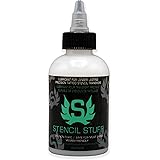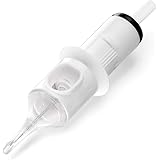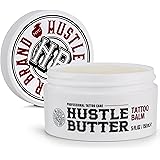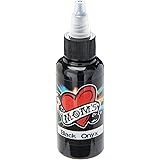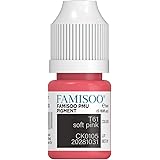The journey of acquiring a new tattoo is exciting. However, the path to vibrant, lasting body art extends far beyond the studio chair. Proper tattoo aftercare is paramount. As the video above wisely points out, your choice of aftercare product significantly impacts your tattoo’s longevity and appearance.
Many enthusiasts face common issues. You might notice tattoos turning blue or green. Some black ink can shift unexpectedly. Blurring can occur surprisingly fast, sometimes within a year. These are not inevitable aspects of aging tattoos. Often, these issues stem from suboptimal aftercare practices. Specifically, a common culprit lurks in many medicine cabinets: petroleum-based products.
Understanding the Impact of Tattoo Aftercare Products
The skin is a complex organ. A fresh tattoo is essentially an open wound. It requires specific conditions to heal optimally. The goal is to facilitate healthy epidermal regeneration. This process secures the ink in the dermal layer. Improper healing compromises pigment stability.
Choosing the right product is critical. It must support the skin’s natural healing cycle. Conversely, using the wrong product can hinder recovery. This leads to common aesthetic problems. These include fading, blurring, and discoloration. It even impacts the vibrancy of fine line tattoos.
The Detrimental Effects of Petroleum-Based Occlusives
The video above highlights a major offender: Aquaphor. It identifies this popular product as problematic. The core issue lies in its thick, petroleum-based formulation. Petroleum jelly, a common ingredient, creates an occlusive barrier. This barrier is often too thick for healing tattoos.
An occlusive barrier prevents adequate air circulation. Your skin needs oxygen to repair itself. Cellular respiration is vital for healing. When oxygen is restricted, cells struggle to regenerate. This stifles the natural recovery process. It can lead to a ‘soggy’ scab formation.
A perpetually moist, air-deprived environment fosters issues. It can encourage bacterial or fungal growth. This creates a less-than-ideal healing landscape. The analogy of a ‘moldy, soggy scab’ is accurate. Such conditions impede proper scar tissue formation. This directly impacts the tattoo’s long-term quality.
Premature Tattoo Aging and Pigment Migration
Restricted airflow has further consequences. It contributes to premature aging of the tattoo. The pigment can migrate more readily. This leads to the undesirable blurring effect. Your crisp lines soften and spread. This ‘blowout’ appearance diminishes the art’s clarity.
Furthermore, color changes like black turning blue or green are common. This can be exacerbated by poor healing. The restricted environment might affect pigment encapsulation. This impacts how light interacts with the ink. The result is an aged, dull aesthetic. Your tattoo loses its original brilliance.
Optimizing Your Healing Environment: Water-Based Solutions
The critical takeaway from the video is clear. Avoid products containing petroleum in their ingredients. Instead, opt for water-based lotions. These provide necessary hydration without suffocating the skin. They allow the tattoo to ‘breathe’. This supports optimal cellular function.
Water-based lotions penetrate the skin gently. They do not form an impenetrable seal. This ensures a healthy exchange of air and moisture. The skin can regulate its temperature. It also efficiently sheds dead cells. This promotes a cleaner, faster healing process.
Products like Lubriderm or Aveeno are often recommended. Look for formulations that are fragrance-free. They should also be hypoallergenic. These characteristics reduce the risk of irritation. Sensitivity can hinder healing. Simple, clean ingredients are always best.
The Science Behind Effective Hydration for Tattoo Aftercare
Proper hydration is crucial. It keeps the skin supple. This prevents excessive cracking or flaking. However, it must be balanced hydration. Over-moisturizing, especially with occlusives, is detrimental. It can lead to maceration of the tissue. This weakens the skin’s barrier function.
Water-based lotions allow skin to absorb moisture. They then permit evaporation. This natural cycle is key. It maintains the skin’s integrity. It ensures the newly tattooed area heals resiliently. This protects the delicate ink below.
For fine line tattoos, this distinction is even more important. Their delicate nature requires precise care. The thin lines can blur easily. They are more susceptible to pigment diffusion. A non-occlusive product is essential. It prevents the intricate details from degrading.
Beyond Product Choice: Comprehensive Tattoo Aftercare
While product selection is vital, it’s part of a larger regimen. Gentle cleansing is equally important. Use a mild, antibacterial, fragrance-free soap. Pat the tattoo dry with a clean paper towel. Avoid rubbing the healing skin. This can dislodge scabs or irritate the area.
Maintain consistent application of your chosen lotion. Apply a thin layer, several times a day. Too much lotion can also be problematic. It can create an overly moist environment. Listen to your body and your tattoo. Adjust frequency based on its needs. However, do not let it dry out completely.
Sun protection is paramount for healed tattoos. UV exposure accelerates fading. Always use a broad-spectrum SPF 30+ sunscreen. This protects your investment. It maintains the vibrancy of your artwork. Even years down the line, sun protection is vital. Proper tattoo aftercare truly dictates longevity.



